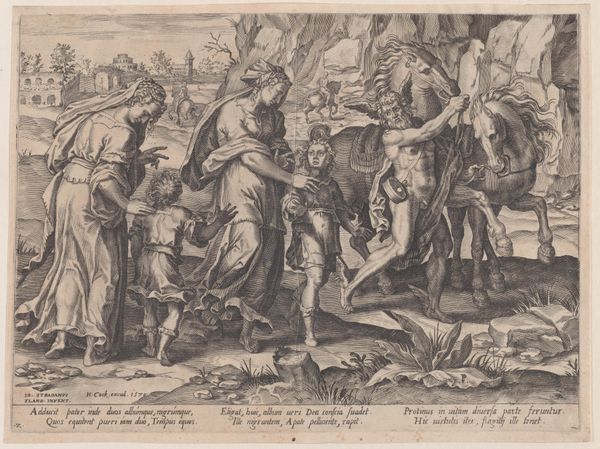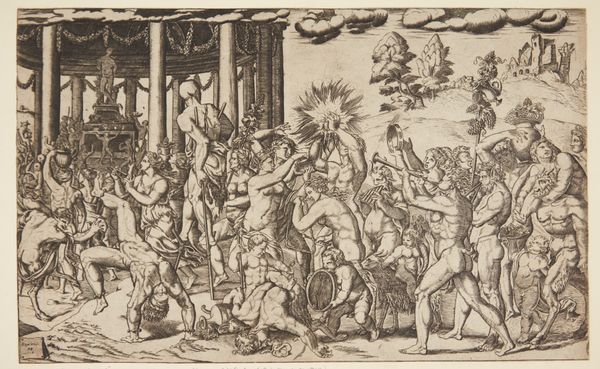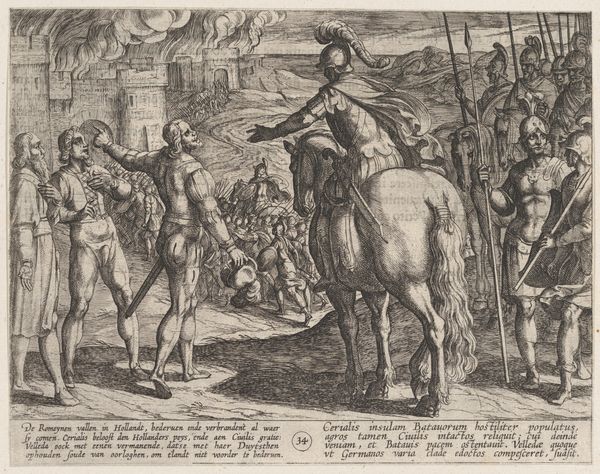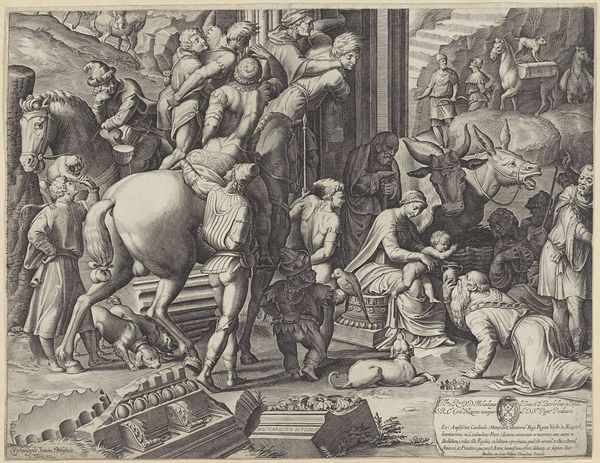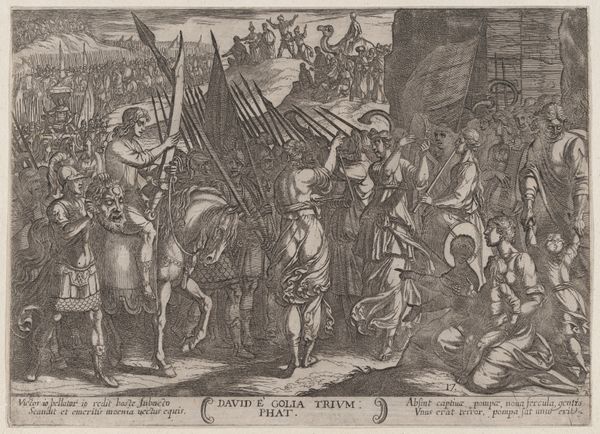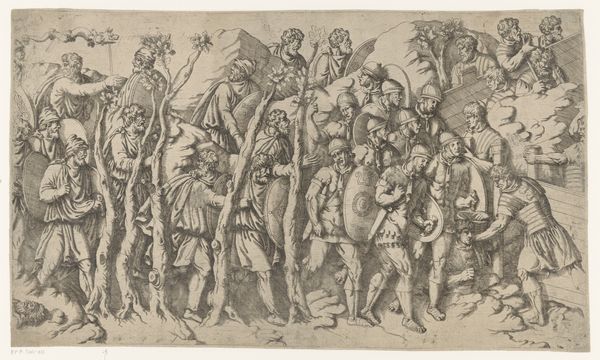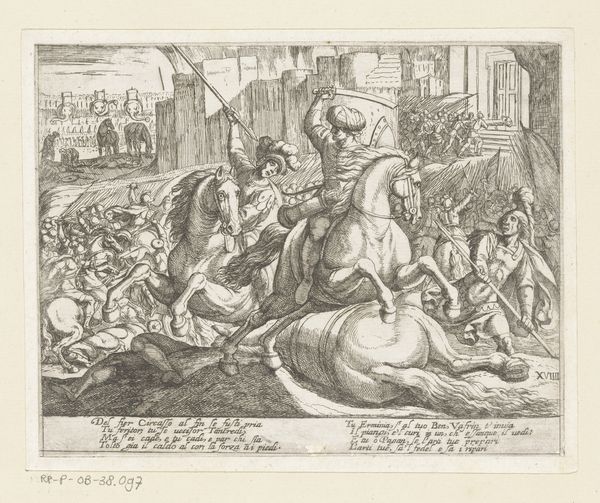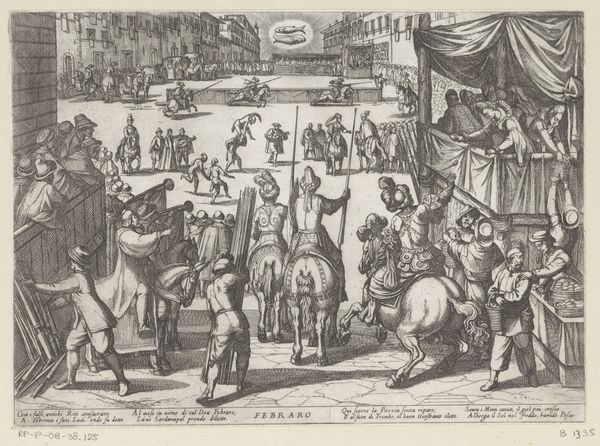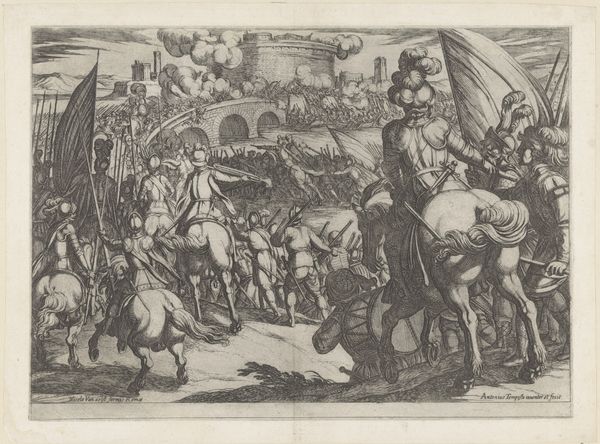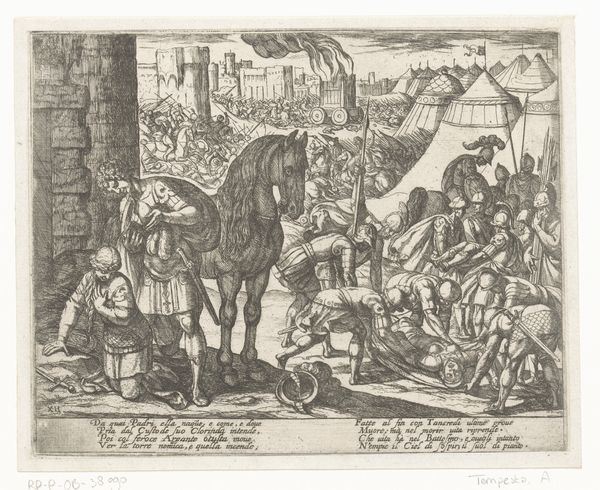
Plate 9: Alexander's Triumphal Entry into Babylon, from The Deeds of Alexander the Great 1608
0:00
0:00
drawing, print, ink, engraving
#
drawing
#
ink drawing
#
narrative-art
#
baroque
# print
#
ink
#
history-painting
#
academic-art
#
engraving
Dimensions: Sheet: 8 7/16 in. × 11 in. (21.5 × 28 cm)
Copyright: Public Domain
Antonio Tempesta etched "Alexander's Triumphal Entry into Babylon" sometime before his death in 1630. It’s part of a series illustrating the life of Alexander the Great, chronicling a key moment of conquest and imperial expansion. The image is filled with classical references. We see Alexander in a triumphant chariot, recalling Roman victory parades, while the architecture hints at the exoticism of Babylon. Consider the cultural context: this print was made in Italy, a region deeply invested in the classical past, yet also expanding its reach through trade and exploration. How might Tempesta’s audience have viewed Alexander? As a heroic figure, or a cautionary tale of overreach? To understand Tempesta’s Alexander, we can turn to sources outside the artwork itself. Contemporary histories, political writings, and even the biographies of the artist, can shed light on the image’s complex meanings. Art history isn’t just about aesthetics; it's about understanding the social and institutional forces that shape what we see.
Comments
No comments
Be the first to comment and join the conversation on the ultimate creative platform.

